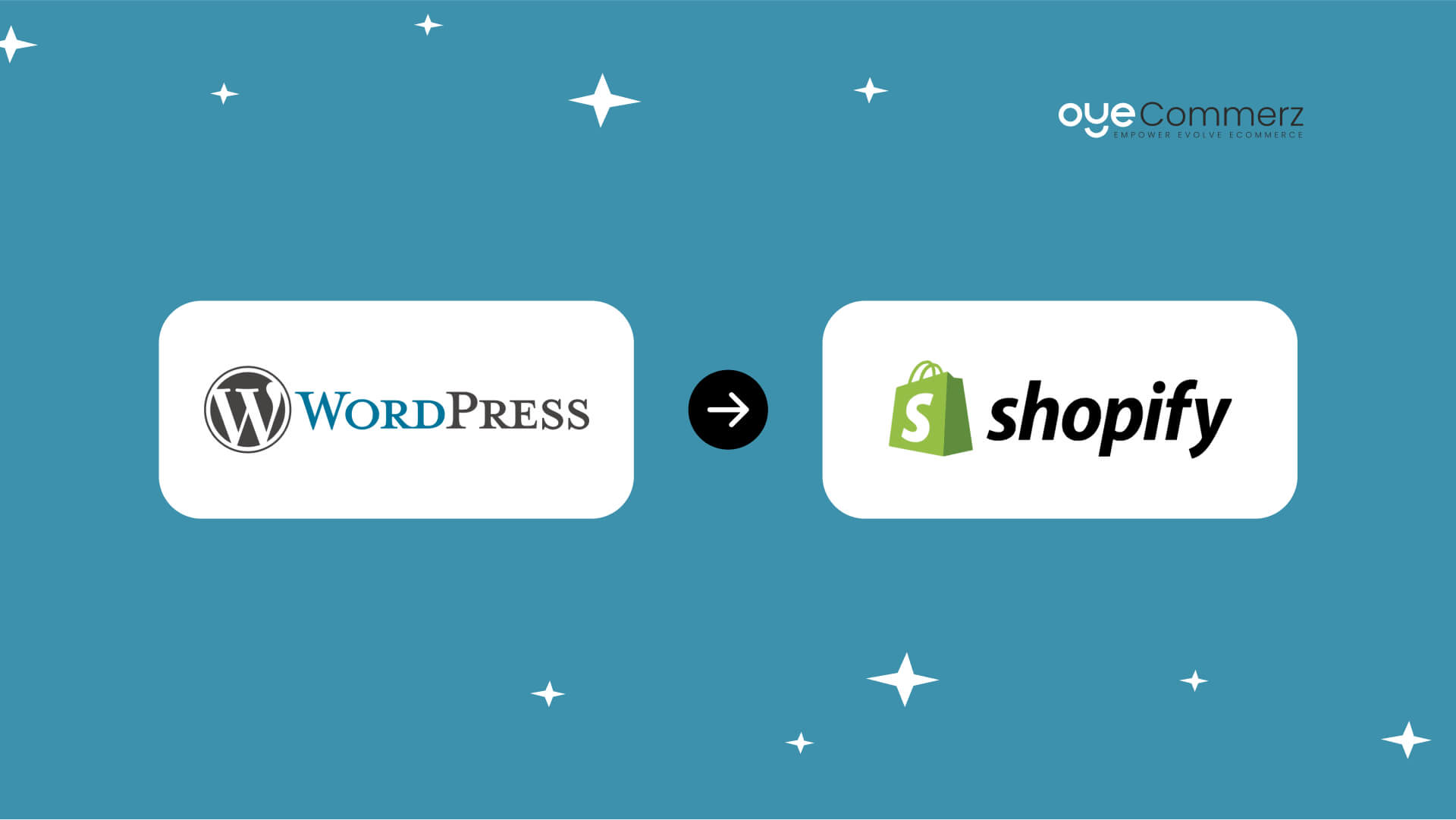Shifting from WordPress to Shopify marks an promising step toward streamlining your e-commerce operations. As companies grow, selecting a solution that supports scalability, user experience, and customization becomes crucial. Shopify has emerged as a favorite for online merchants, offering superior flexibility, data protection, and user-friendliness. In this guide, we will delve into the transformative impact of this migration, discuss the benefits, and share actionable steps to facilitate a smooth transition.
1. Why Migrate from WordPress to Shopify?
WordPress, paired with WooCommerce, continues to support countless online stores. Nevertheless, as companies expand, issues like plugin dependency, data risks, and technical complexities often obstruct progress. Shopify, designed explicitly for digital retail, addresses these concerns with an all-in-one, user-friendly solution. Statistics back this transition—Shopify powers over 4.4 million stores worldwide, with a documented 10% increase in sales performance for many businesses after migration.
2. Key Benefits of Shopify for E-commerce Success
Shopify’s powerful platform is tailored for expanding brands. Its notable benefits include:
- Effortless Design Flexibility: Shopify offers over 80 expertly crafted themes.
- Built-in Features: Features like Shopify Payments and built-in SEO streamline operations.
- Global Reach: Currency versatility and regional customization empower businesses to reach global markets.
Additionally, Shopify boasts an uptime rate of 99.98%, guaranteeing your store is always operational.
3. Getting Ready for Your WP-to-Shopify Transition
Prior to starting the migration process, assess your current store. Review product data, customer details, and search engine rankings. Tools like Shopify’s Migration Kit or external tools can simplify this process. Create a comprehensive plan, making sure all resources—product descriptions, images, and articles—are ready for seamless import.
4. Data Migration: A Critical Step
Data migration forms the foundation for a smooth platform switch. When moving from WP to Shopify, focus on:
- Inventory Details: SKU, descriptions, and categories.
- Customer Data: Emails, purchase records, and custom fields.
- Search Engine Considerations: Retain meta tags, URLs, and redirects to maintain search rankings.
Leverage apps like LitExtension to facilitate seamless migration while reducing mistakes.
5. Tailoring Your Shopify Store to Fit Your Brand
Post-migration, personalizing your Shopify store helps it reflects your brand. Utilize Shopify’s drag-and-drop editor to design pages effortlessly. Shopify's themes are mobile-responsive, ensuring a smooth UX across platforms—a critical factor, given 74% of online shopping comes from mobile users.
6. How to Protect Your SEO Rankings When Switching Platforms
SEO is vital Shopify API integration for maintaining your online presence during migration. Shopify is highly optimized for search engines with clean URL structures, built-in optimization tools, and smooth content management. Ensure:
- Set up URL forwarding for old URLs.
- Optimize new pages with targeted phrases.
- Use Shopify's apps Plug in SEO to monitor performance after the switch.
7. Post-Migration Testing
After finishing the transfer, conduct thorough testing.
Check:- Website speed (Shopify boasts faster speeds compared to WP).
- Payment integration reliability and checkout processes.
- Adaptability across devices.
Testing guarantees your store provides a smooth shopping experience from the start.
8. Real-Life Success Story
One such migration success story is Gymshark, a fitness apparel brand that moved to Shopify. Post-migration, the company saw a 60% boost in mobile sales and reduced site downtime. This highlights the capabilities of Shopify in driving online business success.
9. Overcoming Common Migration Issues
Migration comes with challenges, such as information accuracy and reconfiguring custom functionalities. However, Shopify’s extensive assistance and external professionals simplify the process. Collaborating with experienced Shopify developers ensures a trouble-free transition.
10. Starting Your Journey with Shopify
Switching from WordPress to Shopify represents a strategic decision to e-commerce. By addressing scalability, streamlining operations, and enhancing the customer experience, Shopify empowers businesses to thrive in competitive markets.
Conclusion
Switching from WordPress to Shopify is a strategic move that can significantly boost your e-commerce success. With a robust migration plan, the right tools, and expert support, you can unlock new growth opportunities.
Ready to make the leap? Let’s discuss how our Shopify migration services can transform your online store. Get in touch Migration for WordPress websites today, or consider: Can your business afford to miss out on Shopify’s growth potential?

Comments on “Seamless WordPress to Shopify Migration: A Comprehensive Roadmap for E-commerce Growth”